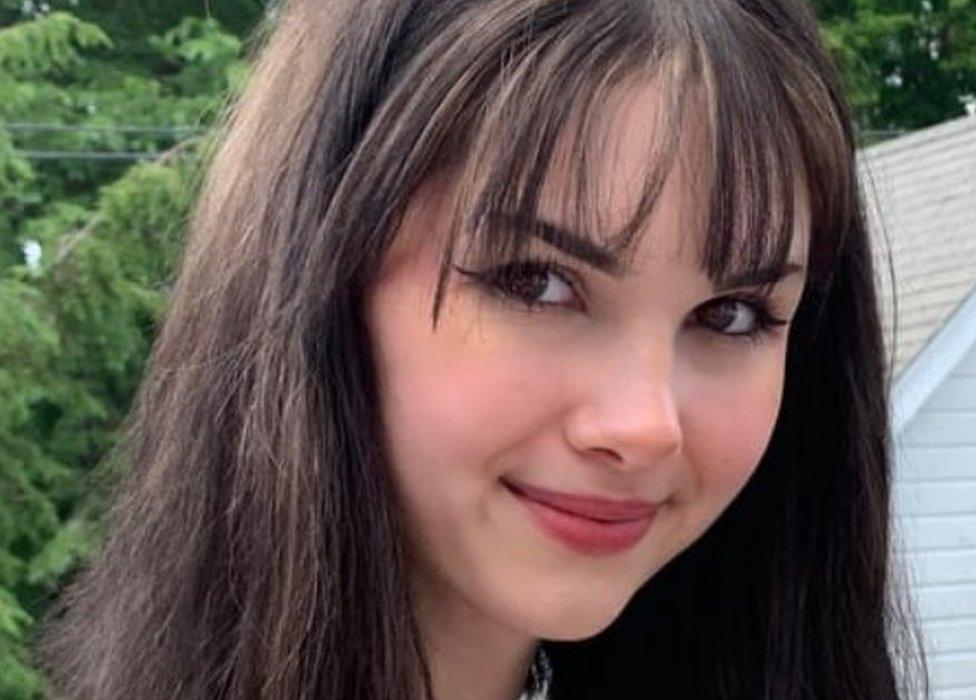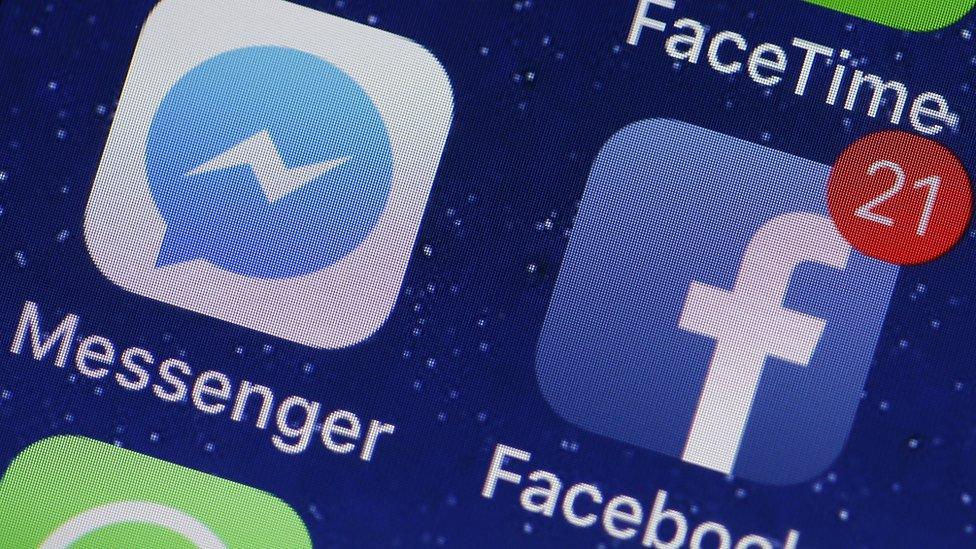Bianca Devins murder images flood Instagram
- Published

Bianca Devins
Instagram is struggling to remove images of the body of a 17-year-old - apparently posted by the man who has now been charged with her murder.
Bianca Devins was killed in Utica, New York, on Sunday morning.
The images were posted on Brandon Clark's account on messaging app Discord, where other users told police.
They also appeared on his Instagram account and were removed but not before they had been copied and shared by other users linking to his account.
Throat cut
Many of those other Instagram users had left comments on the remaining posts on Brandon Clark's account, urging his followers to view the copied images on their profiles.
Then, in an attempt to drown out this spread of the images of Ms Devins's body with her throat cut, other Instagram users started posting photographs of her alive as well as pictures of flowers and animals, using her name as the hashtag.
Brandon Clark's Instagram account has now been removed.
And the company says it is working with the police and using a combination of technology and reports from users to remove other accounts attempting to spread the images.
Tragic event
"We are taking every measure to remove this content from our platforms," a spokesman for Facebook, which owns Instagram, said.
"We don't want people seeing content that violates our policies."
"Our goal is to take action as soon as possible - there is always room for improvement.
"Our thoughts go out to those affected by this tragic event."
'Incriminating statements'
Ms Devins's family paid tribute to her, describing her as "a talented artist, a loving sister, daughter, and cousin, and a wonderful young girl".
In a statement posted on Facebook, Utica police said it appeared the pair had met on Instagram two months ago.
They had been to a concert together the previous evening and had argued on their way back.
Having received reports from Discord users, officers had been searching for the couple when Brandon Clark had called the emergency services himself and made "incriminating statements" as well as "alluding to the fact that he was going to harm himself", the police said.

The online spread of graphic imagery of this tragic event has chilling echoes with that of the New Zealand shootings just four months ago.
On that occasion, the killer streamed live video on Facebook for 17 minutes as he fired at men, women and children at two mosques.
Facebook was criticised then for failing to remove all traces of the footage in the immediate aftermath.
It said it had removed 1.2 million copies of the video within 24 hours and blocked a further 300,000.
But stills and clips still spread, cropping up all over social media, sometimes used as profile photos.
The tech giants are quick to talk up the advanced automated tools they are developing to keep their platforms safe.
However, tragedies such as this suggest that there is still a long way to go, and the patience of both their own users and global authorities is wearing thin.
If you've been affected by issues explored in this article, BBC Action Line has links to helpful resources.
- Published19 March 2019
